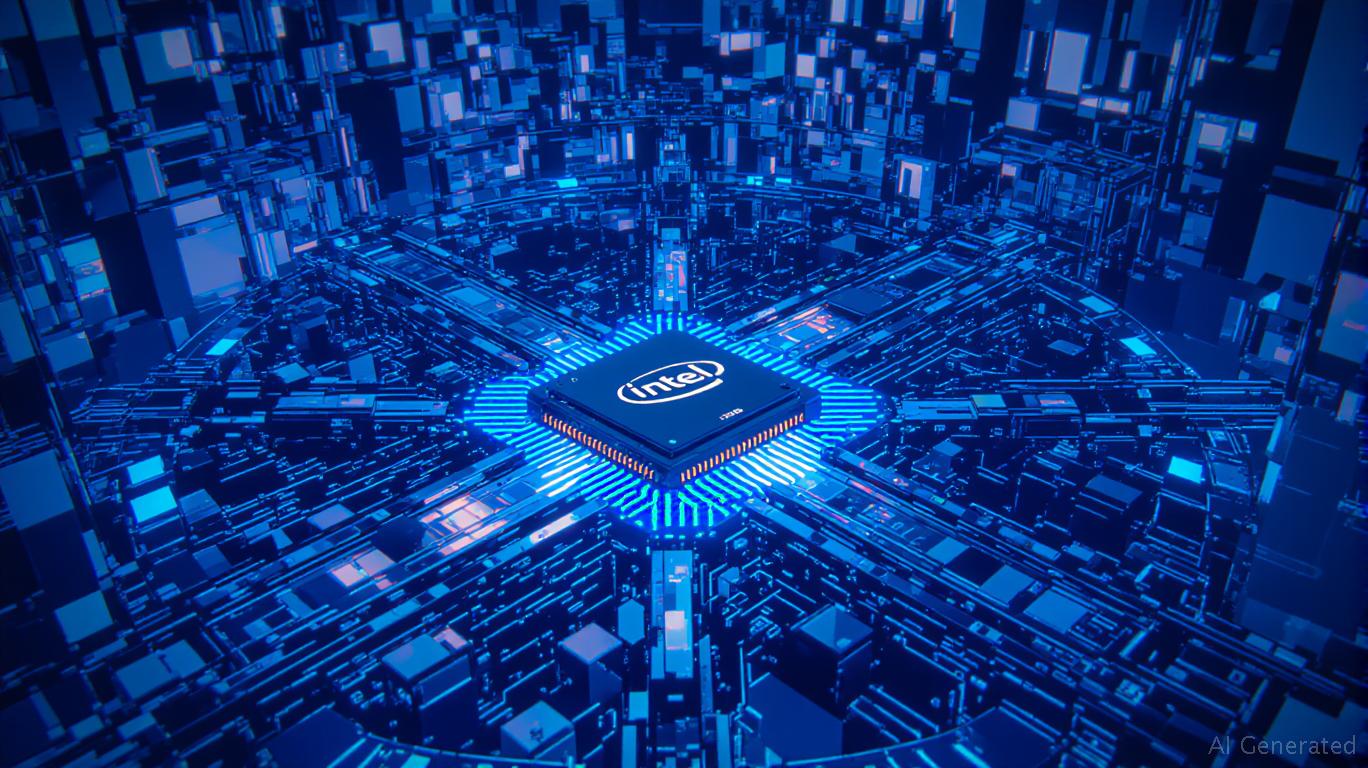Intel's Foundry Pivot: Navigating Near-Term Storms for Long-Term Gains

Intel's decision to pivot from its struggling 18A manufacturing process to the more commercially viable 14A node marks a pivotal strategic realignment. While this shift aims to strengthen its competitiveness against
, the move carries significant financial risks and uncertainties. Investors must weigh near-term challenges—including potential write-downs and limited client commitments—against the long-term promise of Intel's advanced 14A technology.Near-Term Implications: Write-Downs and Minimal Immediate Pain
The immediate financial impact of Intel's strategic shift is expected to be manageable, according to
analysts. The firm's report highlights that discontinuing external promotion of the 18A process—a move to redirect resources to the 14A node—will likely result in a $1 billion write-down, primarily from stranded assets and abandoned marketing efforts. However, analysts argue that this cost is outweighed by the long-term benefits of focusing on a process node with clearer commercial appeal.Morgan Stanley's “minimal near-term impact” thesis hinges on two factors:
1. Low Foundry Revenue Dependency: Intel's 2024 net loss of $18.8 billion was driven largely by its CPU business, with foundry losses at just $2.3 billion in Q2 2025. The 18A process was never expected to generate significant external revenue, as most client commitments were limited to
2. Strategic Reallocation: Redirecting capital to the 14A node allows to pursue high-value contracts with and , which could offset the write-down over time.
Competitive Risks: Can Intel Win Over TSMC's Clients?
The 14A node's viability hinges on its ability to attract major clients like Apple and NVIDIA, currently reliant on TSMC's N2 process. Intel claims the 14A offers 15-20% better performance and 25-35% lower power consumption than its 18A predecessor, positioning it to rival TSMC's 2nm technology. However, execution risks remain:
- Timing Challenges: The 14A is not slated for mass production until 2027, giving TSMC's N2 (already in production) a two-year head start.
- Client Skepticism: Intel's historical delays (e.g., Panther Lake CPU production) and internal disagreements over the 18A pivot have eroded trust. Securing design wins requires flawless execution.
GuruFocus's 6.8% Upside vs. Wall Street's “Hold”: A Tale of Two Views
GuruFocus's bullish stance—projecting a 6.8% upside to $23.86—relies on Intel's long-term potential to reclaim foundry leadership. Key drivers include:
- AI and Data Center Growth: Intel's focus on AI chips (e.g., Gaudi 3) and cloud infrastructure aligns with a sector expected to grow at 15% CAGR through 2027.
- Cost Discipline: A $17 billion cost-cutting plan by 2025, including layoffs and shutting underperforming divisions, could stabilize margins.
Conversely, Wall Street's “Hold” consensus (average target of $21.24) reflects near-term concerns:
- Valuation Discount: Intel's 8x P/E ratio versus TSMC's 20x multiple underscores investor skepticism about its execution.
- External Client Pipeline: Without confirmed deals with Apple or NVIDIA by 2025, the foundry's breakeven timeline (projected for 2027) faces delays.
Investment Thesis: Balance Risk and Reward
Investors face a classic dilemma: pay now for potential, or wait for proof?
Bull Case:
- Intel secures Apple/NVIDIA design wins by 2026, driving foundry revenue to $10 billion annually by 2028.
- The 14A node's High-NA EUV lithography surpasses TSMC's 2nm in performance, cementing Intel's leadership.
- Stock rises to $40+ by 2027, closing the valuation gap with TSMC.
Bear Case:
- Write-downs exceed $1 billion, and client wins remain elusive.
- TSMC's N2 dominates AI/HPC markets, leaving Intel's foundry division perpetually unprofitable.
- Stock declines to $15-$18, reflecting diminished prospects.
Final Recommendation: A Cautious Long Position
While the risks are substantial, Intel's pivot to the 14A node represents a strategic necessity to compete in the advanced-node race. Investors should consider:
- Position Sizing: Allocate a small portion (5-10%) of a tech portfolio to Intel, with a 2-3 year holding horizon.
- Watch for Catalysts: Monitor Q4 2025 board decisions on the 18A/14A shift, Panther Lake's production timeline, and any public client commitments.
Final Verdict: Intel's 14A strategy could redefine its future—if it can execute. For now, the stock's depressed valuation offers a margin of safety, but investors must brace for volatility until client wins materialize.
Investors should conduct their own due diligence and consult with financial advisors before making investment decisions.
Sign up for free to continue reading
By continuing, I agree to the
Market Data Terms of Service and Privacy Statement

Comments
No comments yet